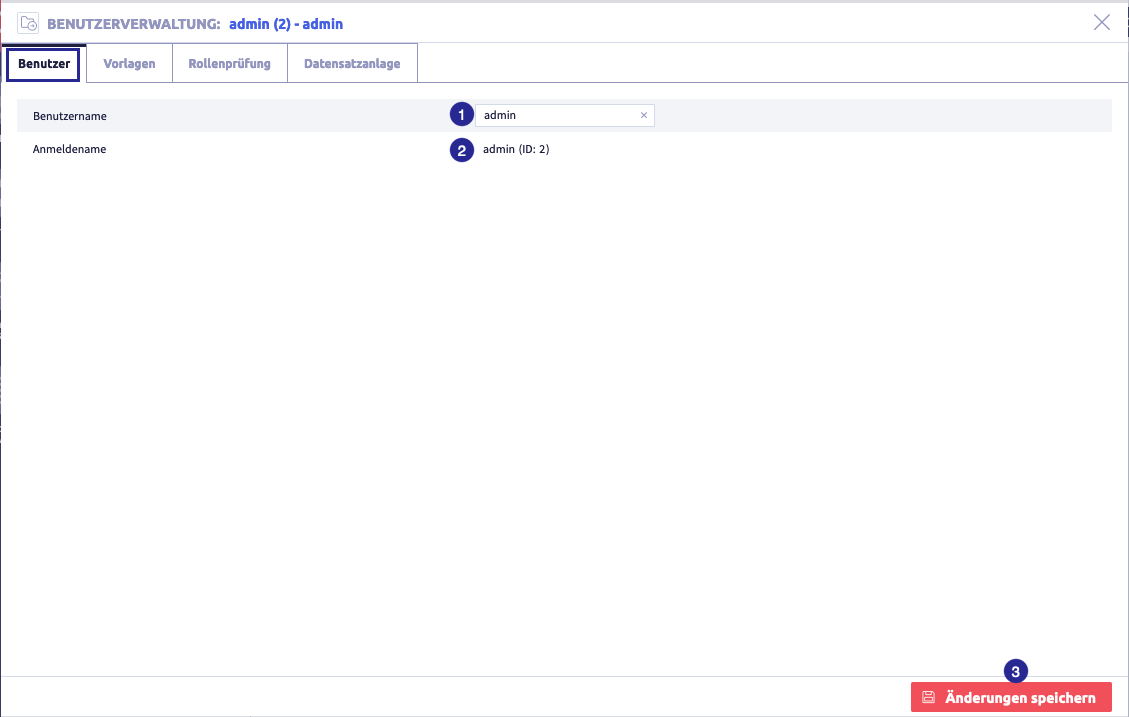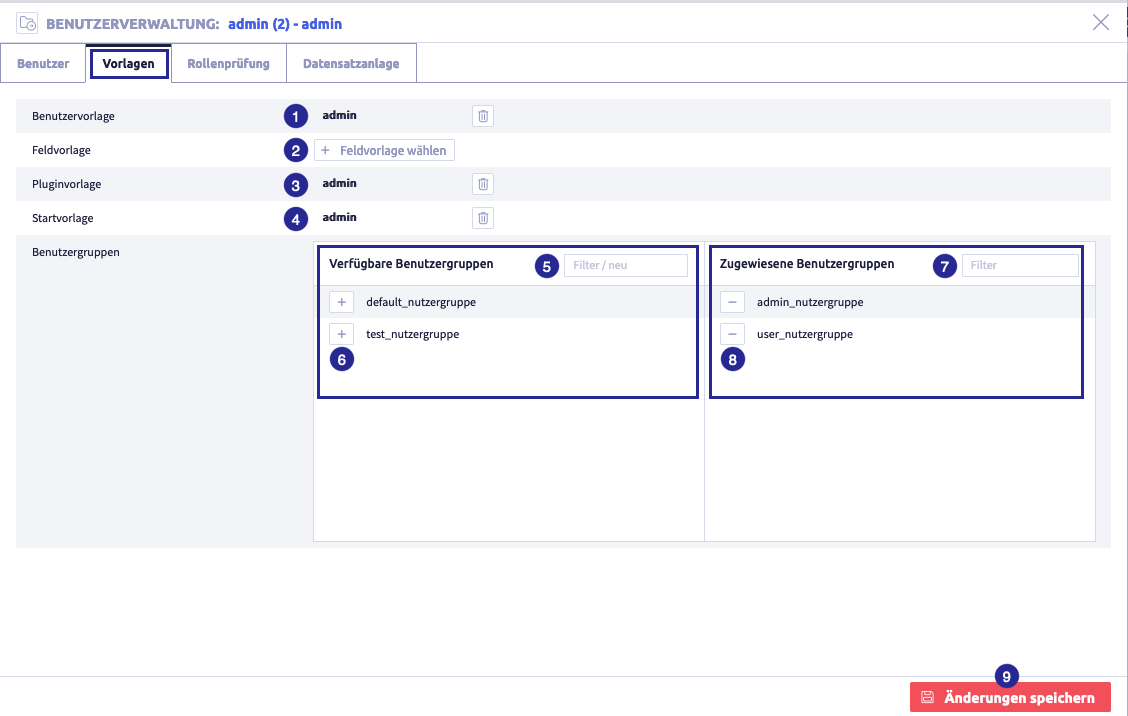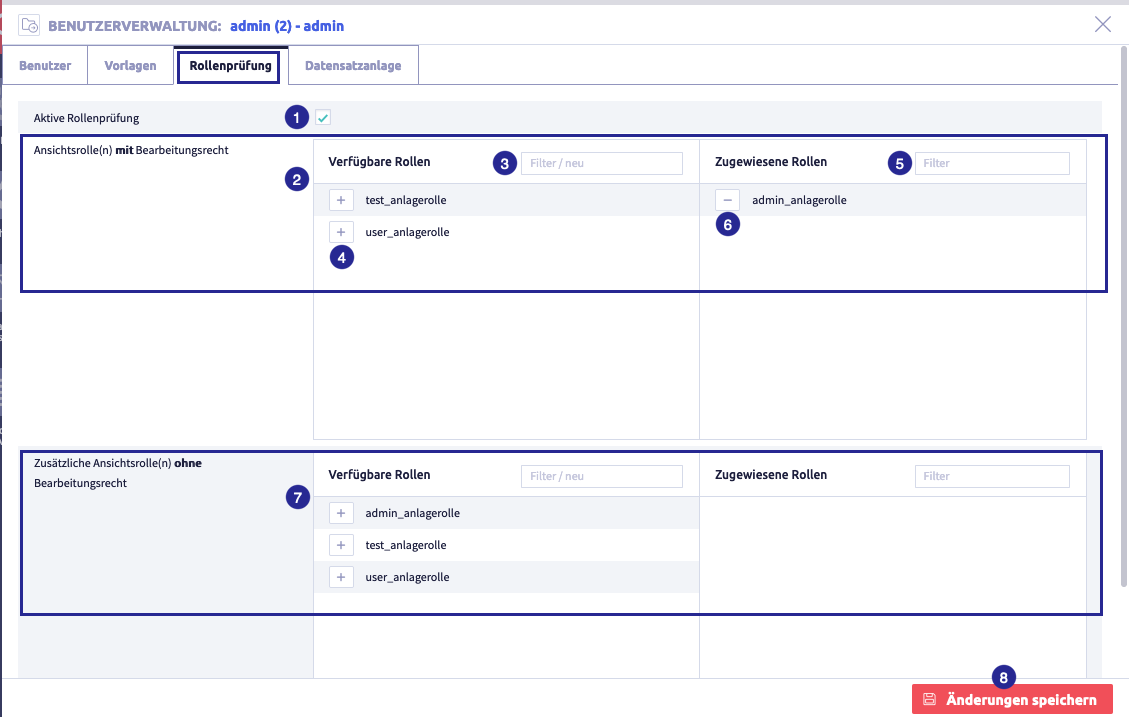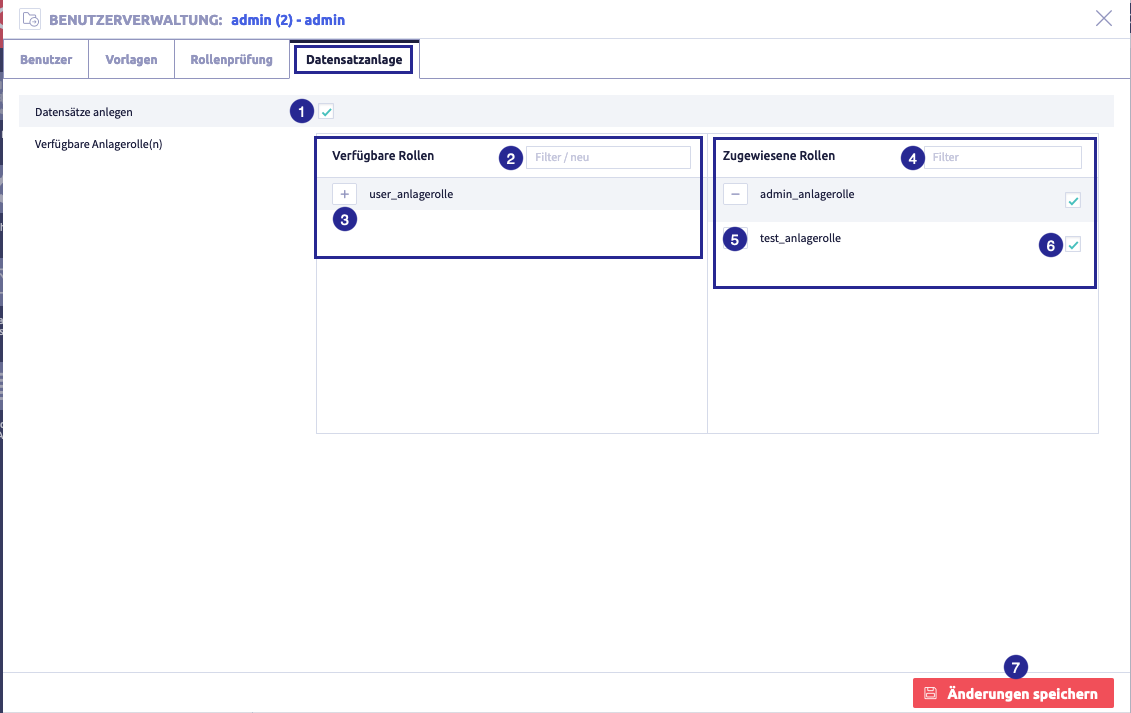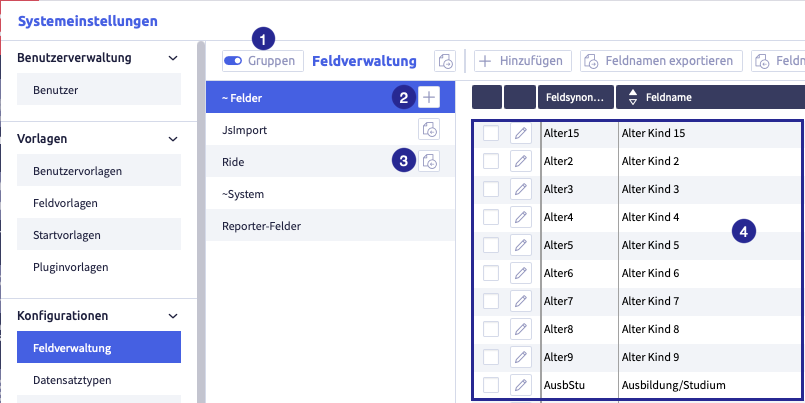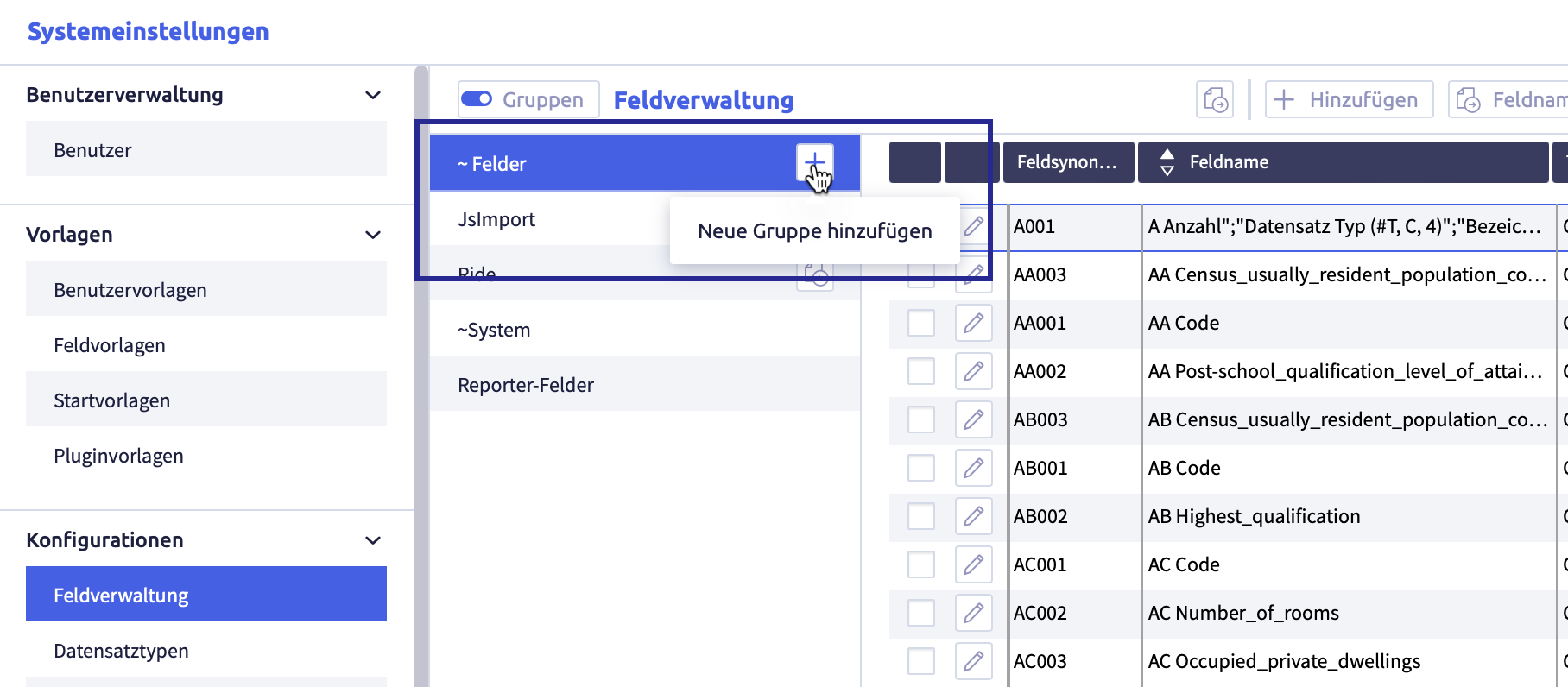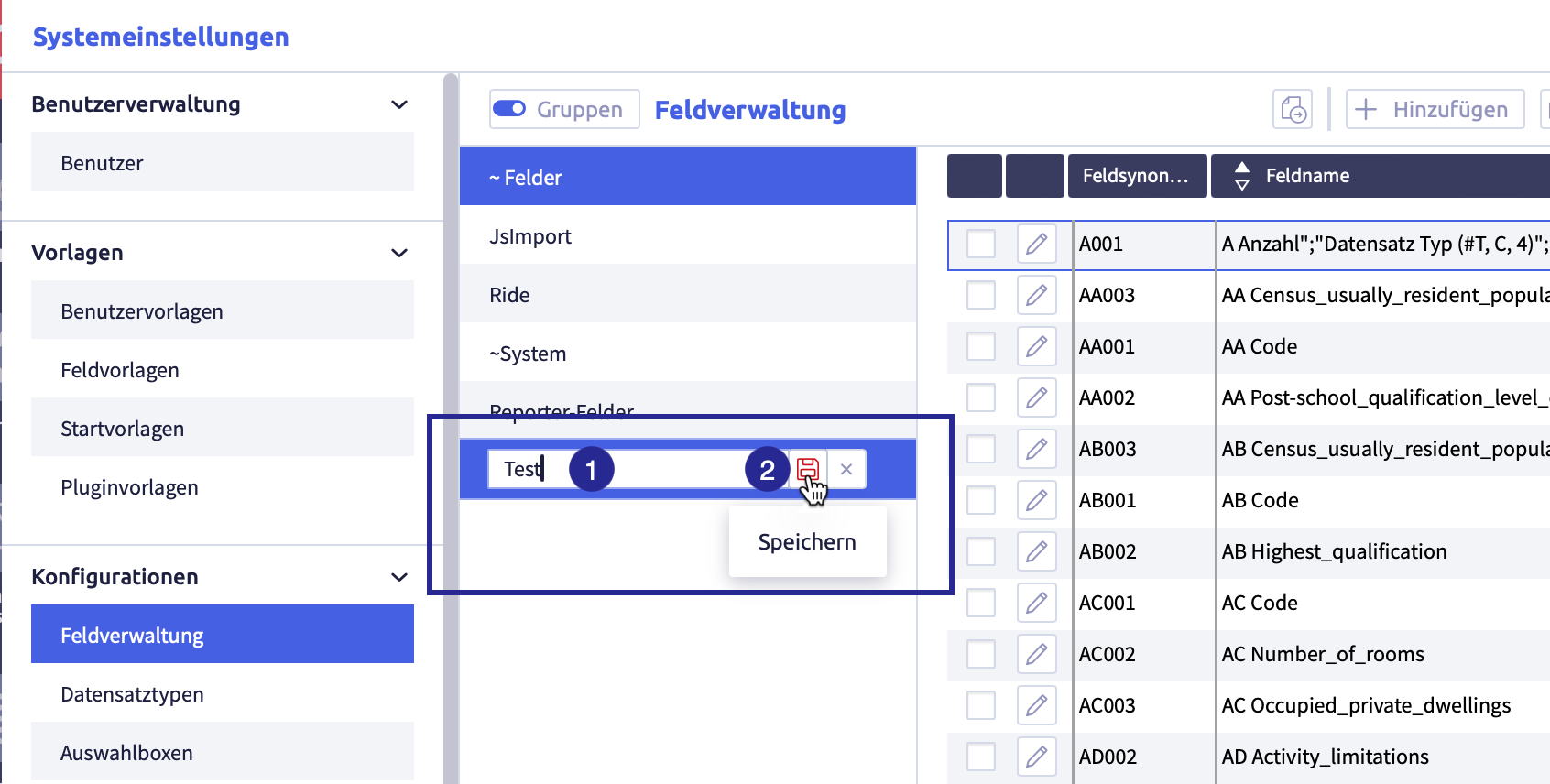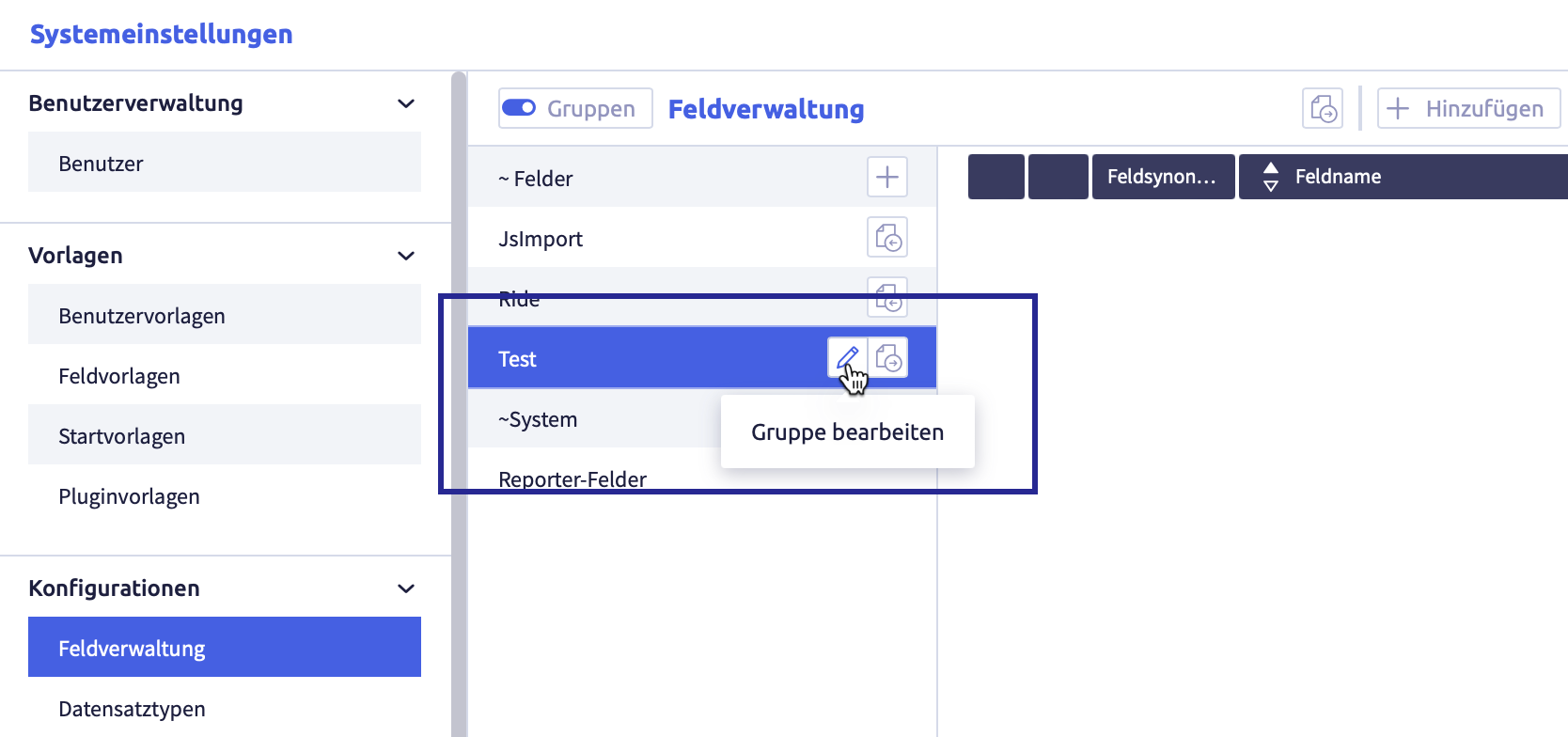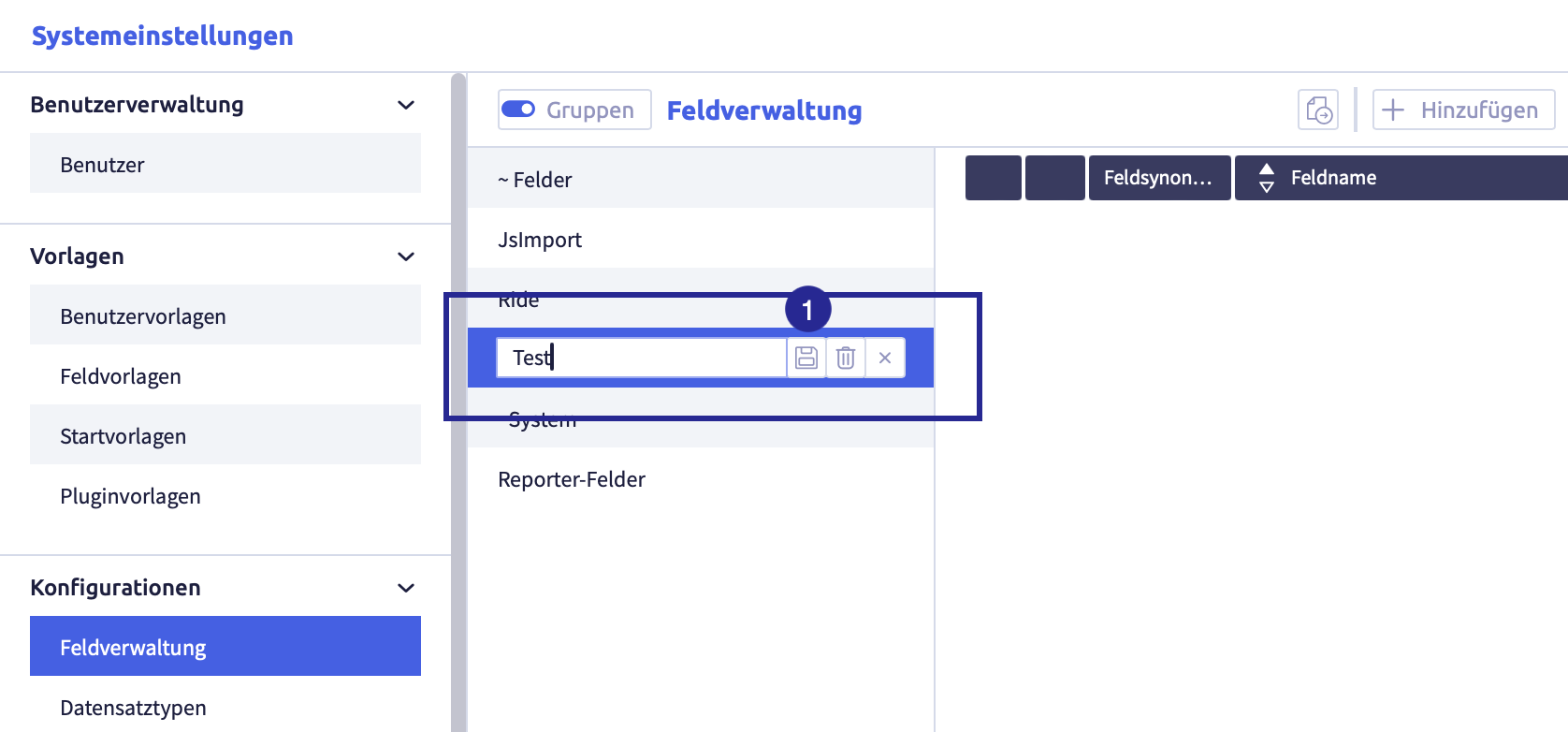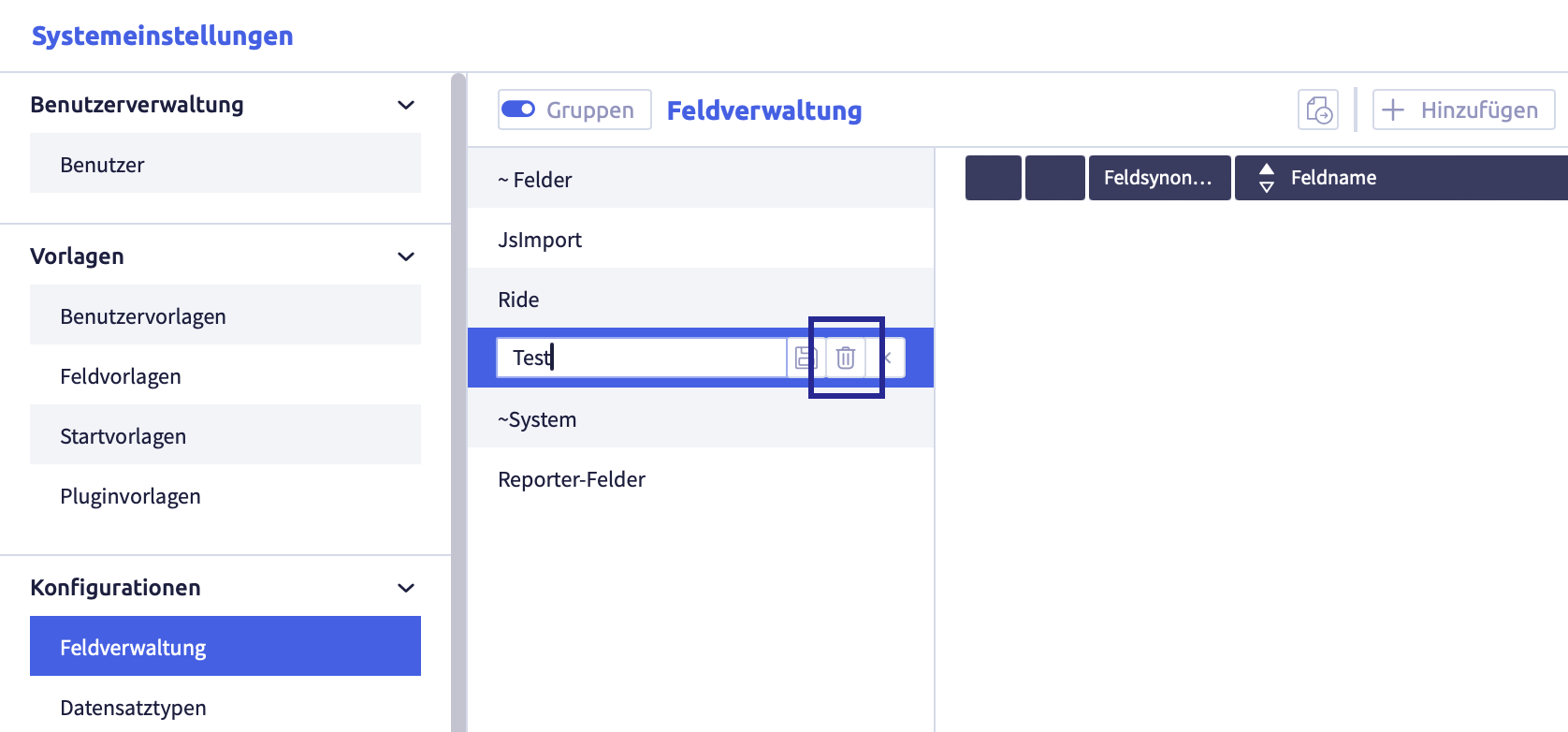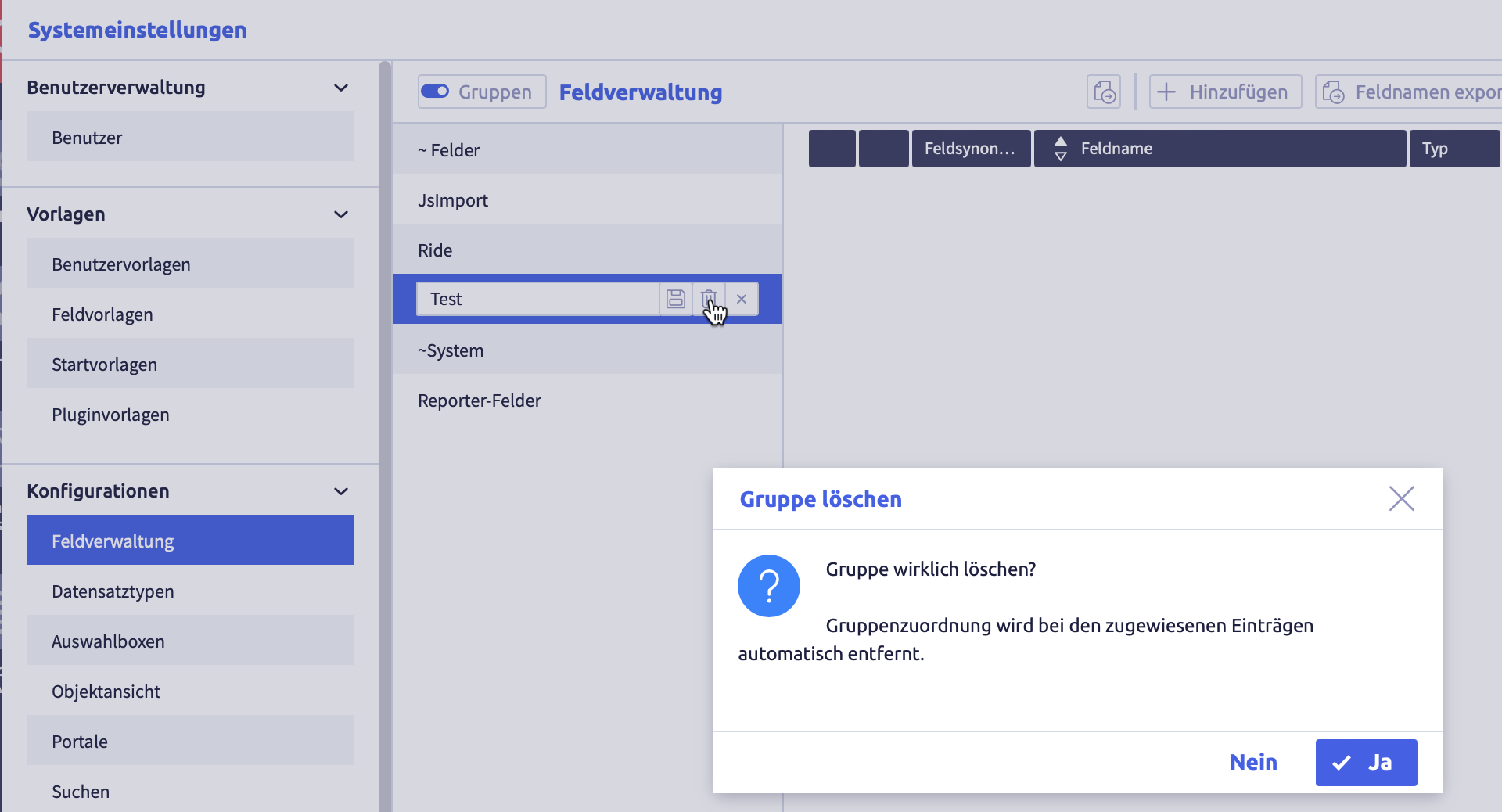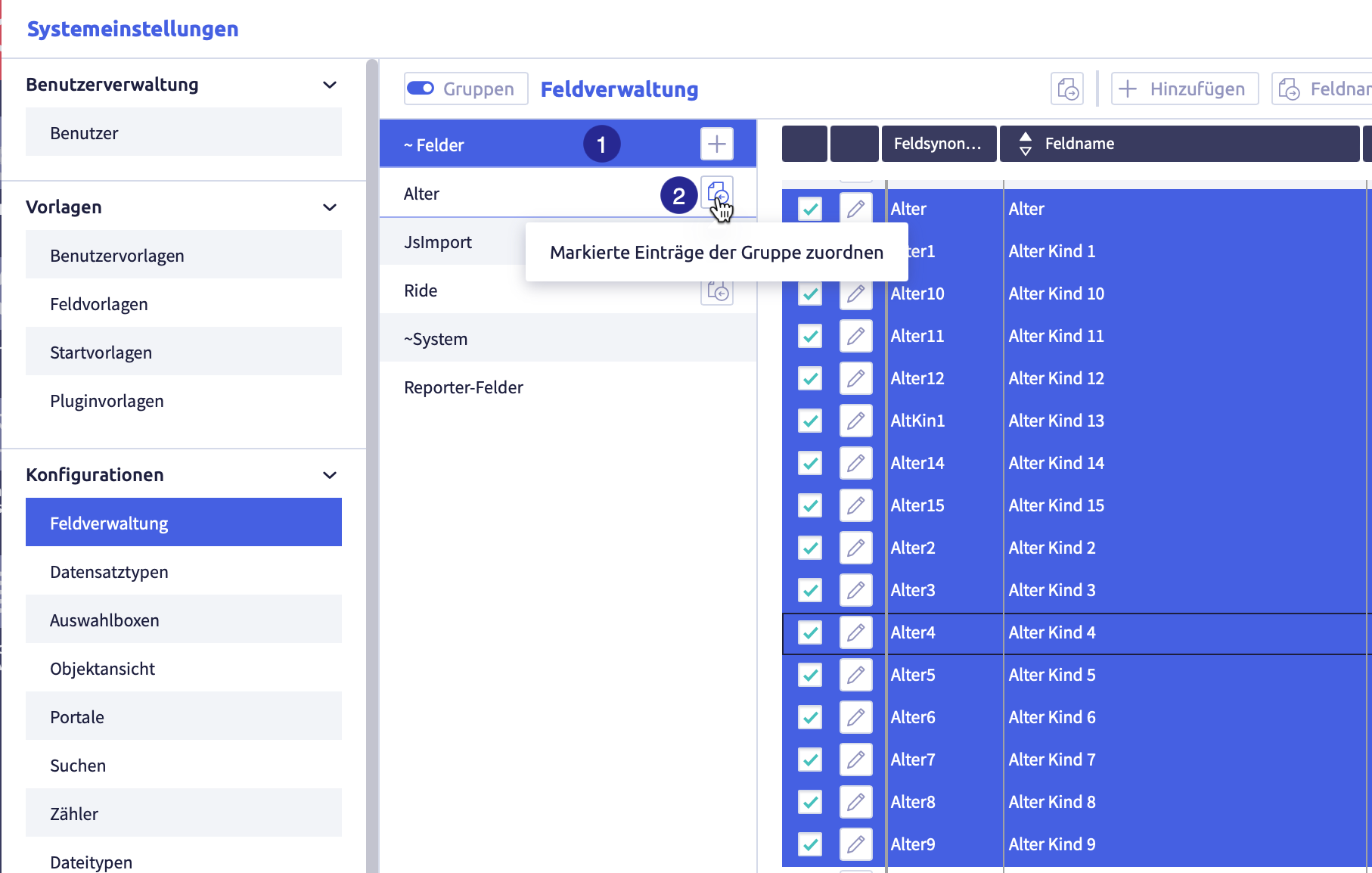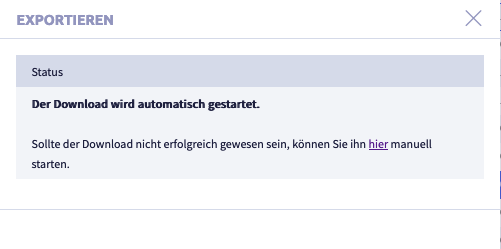User¶
The User menu is where you manage the following for individual users:
- permissions and roles, e.g. view, edit and create new records
- elements of the start page
The following actions are possible in the User menu:
Users are added and deleted in the Remote admin.
The image shows the users: (1) navigation, (2) button Groups, (3) button Edit
, (4) list with all users, (5) checkbox Activated users only, (6) buttons with export and import options
The button Edit ![]() will open the editor
will open the editor
If the function Groups is active, the users can be organized into groups for simplified administration.
Warning
- Changes in system settings often only take effect when a restart is carried out after closing the system settings (menu item under the button with the user name at the top right, see also introduction).
- If another user with admin rights is currently editing this system setting, the red icon lock
 appears in the header and a warning message appears with the name of the currently active user.
appears in the header and a warning message appears with the name of the currently active user.
Edit user administration¶
The editor for users consists of four tabs:
Edit all tabs as required.
Tab User¶
The image shows the tab User of the editor: (1) field for user name, (2) information login name, (3) button Save changes
Table with all elements of the tab User
| Name | Meaning | Note |
|---|---|---|
| field Username | display name | can be edited |
| information Login name | will be assigned when the user is set up and cannot be edited | |
| button Save changes |
Tab Templates¶
The image shows the tab Templates of the editor: (1) assigned user template, (2) button Select field template
, (3) assigned plugin template, (4) assigned starting template, (5) field Filter/new for available user groups, (6) button Add
button to assign user group to user, (7) field Filter for assigned user groups, (8) button to unassign user group, (9) button Save changes
Table with all elements of the tab Templates
| Name | Meaning | Note |
|---|---|---|
| button User template or assigned user template | ||
| button Field template or assigned field template | ||
| button Plugin template or assigned plugin template | ||
| button Starting templates or assigned starting template | starting template defines the start tab on the start page | If no starting template is assigned,the starting portal is displayed. |
| field Filter/new | search for an existing user group or create a new group by entering a new name. Newly added groups are automatically assigned. | The groups shown here are the same groups in which users can be organized into groups. |
| button to assign user group to user | ||
| field Filter | search for an assigned user group | |
| button to unassign the user group | ||
| button Save changes |
Tab Role validation¶
The image shows the tab Role validation of the editor: (1) checkbox Active role validation, (2) area view role(s) with edit right, (3) field Filter/new for available roles, (4) button Add
button to assign role to user, (5) field Filter for assigned roles, (6) button to unassign role, (7) area additional view role(s) without editing rights, (8) button Save changes
Table with all elements of the tab Role validation
| Name | Meaning | Note |
|---|---|---|
| checkbox Active role validation | if the role validation is activated, the user can only edit/view the records with this role | |
| area View role(s) with editing rights | user can edit the records to which the role(s) has/have been assigned | the role can be assigned to the record in the record view |
| field Filter/new | search for an existing role or create a new role by entering a new name. Newly added roles will be assigned automatically. | The roles shown here are the same roles that are displayed under role overview. |
| button to assign role to user | ||
| field Filter | search for an assigned role | |
| button to unassign the role | ||
| area View role(s) without editing rights | user can view the records to which the role(s) have been assigned | the role is assigned to the record in the record view |
| button Save changes |
Tab Record creation¶
The image shows the tab Record creation of the editor: (1) checkbox Create records, (2) field Filter/new for available roles, (3) button Add
to assign a role to the user, (4) field Filter for assigned roles, (5) button to unassign the role, (6) checkbox Preset role, (7) button Save changes
Table with all elements of the tab Record creation
| Name | Meaning | Note |
|---|---|---|
| checkbox Create records | determines whether the user is allowed to create new records or not | |
| field Filter/new | Search for an existing role or creation of a new role by entering a new name. Newly added roles are assigned automatically. | The roles shown here are the same roles that are displayed under roles overview. |
| button to assign role to user | ||
| field Filter | search for an assigned role | |
| button to unassign the role | ||
| checkbox Preset role | if the checkbox is active, the role will be displayed under roles overview and can be assigned in this tab and the Role validation tab | |
| button Save changes |
Activated users only¶
If this checkbox is inactive, all users will be displayed. The Remote admin is used to manage whether a user is active or inactive.
Organize users into groups¶
If the function Groups is active, the record types can be organized into groups for simplified management.
The following actions are possible:
- create groups
- rename groups
- delete groups
- add elements to a group
- remove elements from a group
Note
The actions are shown using the example Field management.
The image shows the field administration with active groups: (1) button Activate groups, (2) button Add group
, (3) button Assign selected entries to group
, (4) fields from the currently active group
Create a group¶
The image shows the field administration with active groups
Create user-defined groups¶
-
A new row will be added:
-
enter the name of the group
-
The list with the group names will be updated, the group has been sorted alphabetically.
Rename a group¶
-
click the group you want to edit
-
The element can be edited or deleted.
-
edit the group name
-
click the button Save
 (or Cancel)
(or Cancel)The list with the group names will be updated, the group has been sorted alphabetically.
Delete a group¶
-
click the group you intend to edit
-
The element can be edited.
-
The following confirmation window opens:
-
click the button Yes (or No)
The group will be deleted and the list of groups will be updated.
Links of elements to this group are automatically deleted.
Add elements to a group¶
(1) selected group with selected elements you want to add to another group, (2) button Assign selected entries to the group
to assign the selected elements to this group
-
select a group from which you want to add elements to another group
-
select all the elements you want to add to the group
-
click the button Assign selected items to group
 of the new group
of the new groupThe elements are added to the group.
An element can belong to several groups.
Remove elements from a group¶
(1) selected group with selected elements to be removed from the group, (2) button Remove selected entries from group
to remove the selected elements from the group
-
click the group from which you want to remove elements
-
select all the elements you want to remove from the group
-
click the button Remove selected items from group
 of the group
of the groupThe elements will be removed from the group.
Export and import users¶
The following exports and imports are possible for users:
Each export is only carried out for highlighted rows in the user´s list.
Image with buttons for export and import
The image shows the export and import buttons: (1) checkbox to select row, (2) button Export selected data as CSV
, (3) button Export selected
, (4) button Import
Export selected data as CSV file¶
Image with buttons for export and import
The image shows the export and import buttons: (1) checkbox to select row, (2) button Export selected data as CSV
, (3) button Export selected
, (4) button Import
-
select the rows you want to export
-
click the button Export selected data as CSV

The CSV file will be downloaded and saved in the download folder (or the folder that was set for it in the browser).
The file name is generated automatically and is called #Userlist.csv.
A list with the following information will be exported:
| Column | Meaning | Note |
|---|---|---|
| user activated | Y(es) or N(o) | |
| admin | does the user have admin permissions? | Y(es) or N(o) |
| Id | ||
| login name | ||
| display name | ||
| record creation | may the user create new records? | Y(es) or N(o) |
| role validation | are restricted roles assigned to the user? | Y(es) or N(o) |
| user template | assigned user template | |
| field template | assigned field template | |
| starting template | assigned starting template | |
| plugin template | assigned plugin template | |
| group(s) | name of the user group(s) | |
| last change | ||
| add new user | ||
| last Login | ||
| view roles | assigned viewing role(s) with editing rights | multiple roles possible |
| additional view roles | assigned viewing roles without editing rights | multiple roles possible |
| create role | assigned create roles | multiple roles possible |
Export selected users¶
Users exported in that way can be imported back into a CortexEngine.
Image with buttons for export and import
The image shows the export and import buttons: (1) checkbox to select row, (2) button Export selected data as CSV
, (3) button Export selected
, (4) button Import
-
select the rows you want to export
-
click the button Export selected
The following window opens:
A .tar file is downloaded and saved in the download folder (or the folder that was set for this in the browser).
The file name will be generated automatically.
Import users¶
Exported users from another CortexEngine can be imported into the current CortexEngine using the Import button.
Image with buttons for export and import
The image shows the export and import buttons: (1) checkbox to select row, (2) button Export selected data as CSV
, (3) button Export selected
, (4) button Import
-
click the button Import
The following window opens:
-
click the button Select file
A window with a file folder opens.
-
select a file
The following formats are suitable for import:
- .tar
- .tar.gz
- #Usr.ctxexp
-
click the button Import
The following window opens (as an example import of a .tar file):
-
click the button Close
The list with all users will be displayed again.

